Solar photovoltaic power generation uses the photovoltaic effect of solar cells to directly convert the radiation energy of the sun into electrical energy. Its core component is the solar cell (also known as photovoltaic cell), which is a large-area silicon semiconductor device.
Crystal structure of silicon semiconductor
The crystal structure of pure silicon semiconductor is composed of silicon atoms arranged, and each silicon atom is surrounded by four covalently bonded electrons (as shown in the figure).
When other elements (such as boron or phosphorus) are doped in silicon crystals, its electrical properties will change:
Incorporation of boron (B): Boron atoms have only 3 valence electrons, so holes (positive charge carriers) are formed in the crystal structure, thus generating a P-type semiconductor.
Incorporation of phosphorus (P): Phosphorus atoms have 5 valence electrons, and the extra electrons become free electrons (negative charge carriers), forming an N-type semiconductor.
When P-type and N-type semiconductors are combined, a PN junction is formed, which is the core structure of a photovoltaic cell. When sunlight shines on the PN junction, it excites electrons, causing them to move in a directional manner under the action of the electric field, thereby forming an electric current and realizing photoelectric conversion.
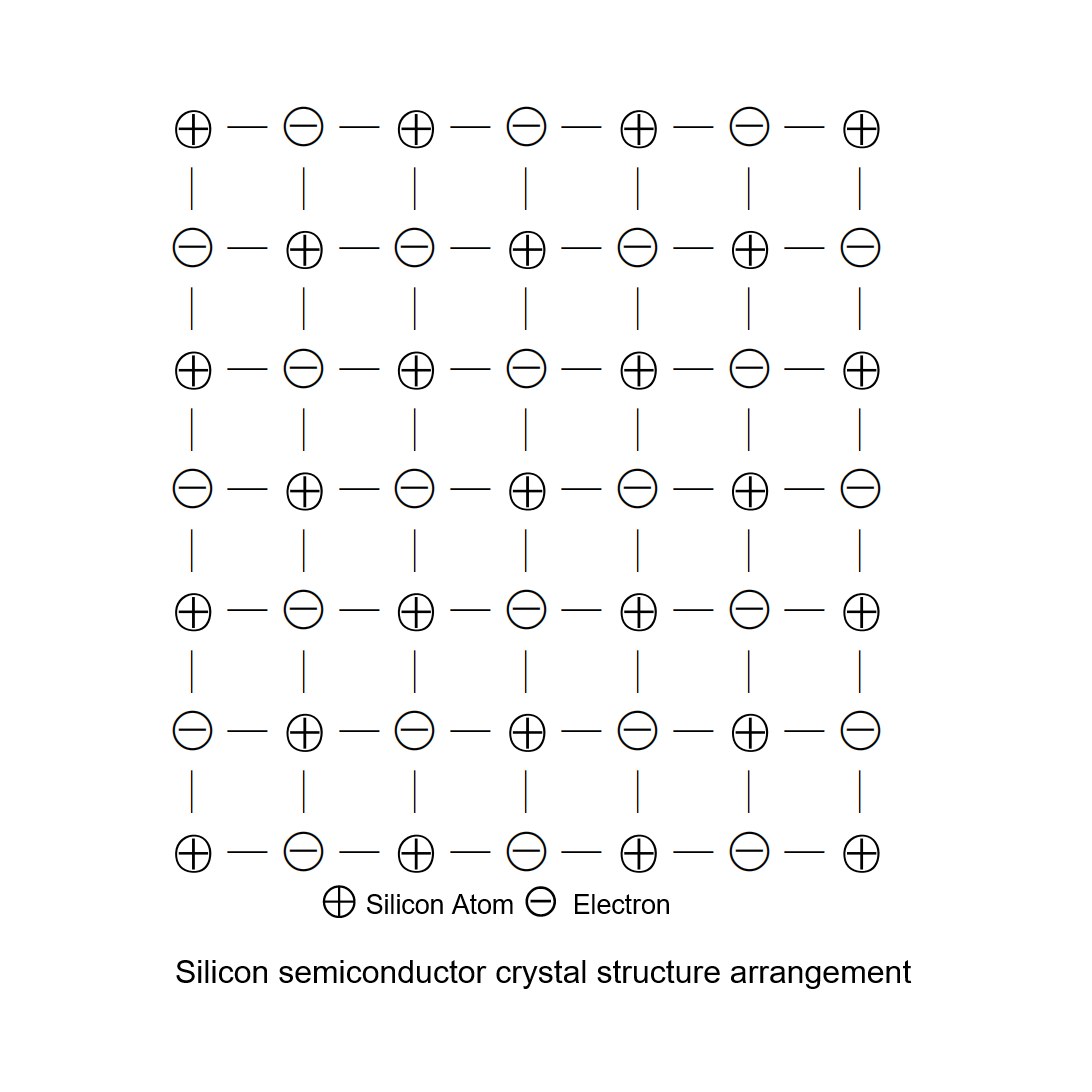
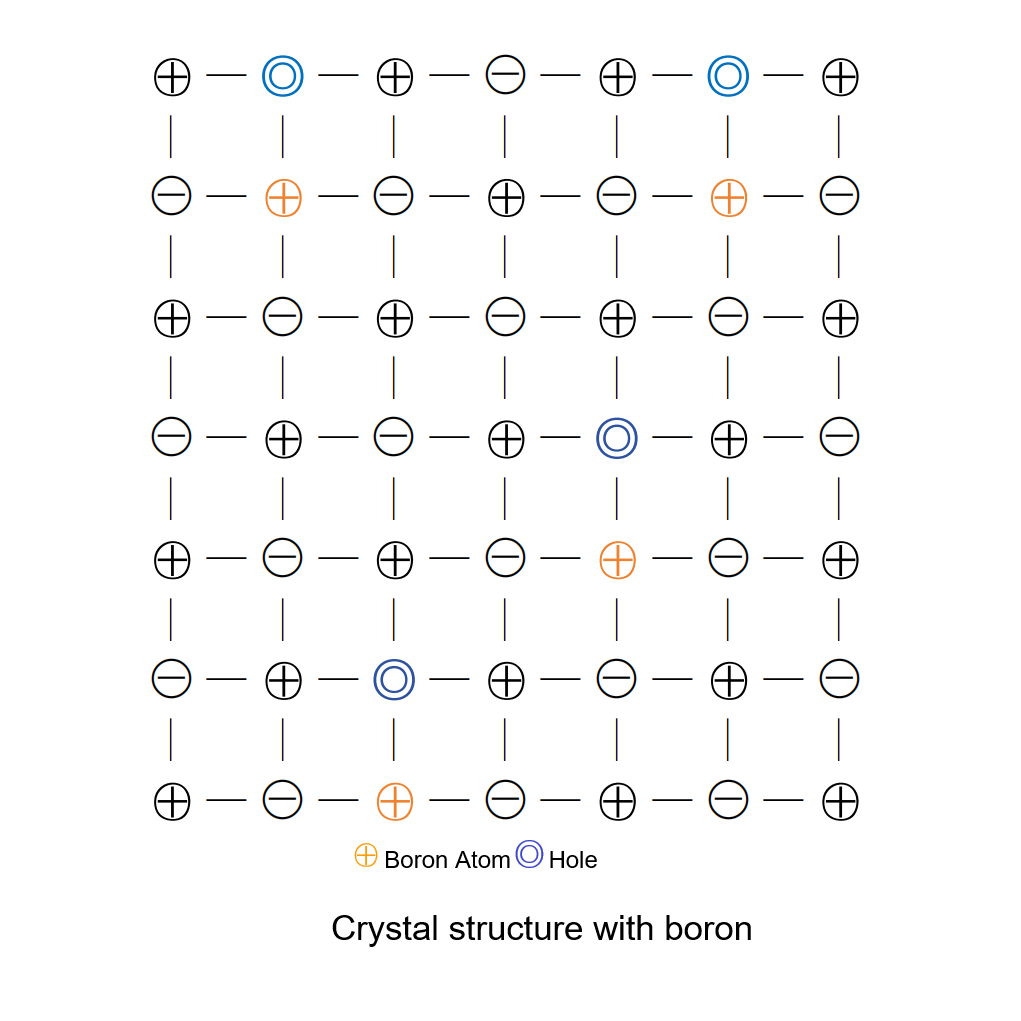
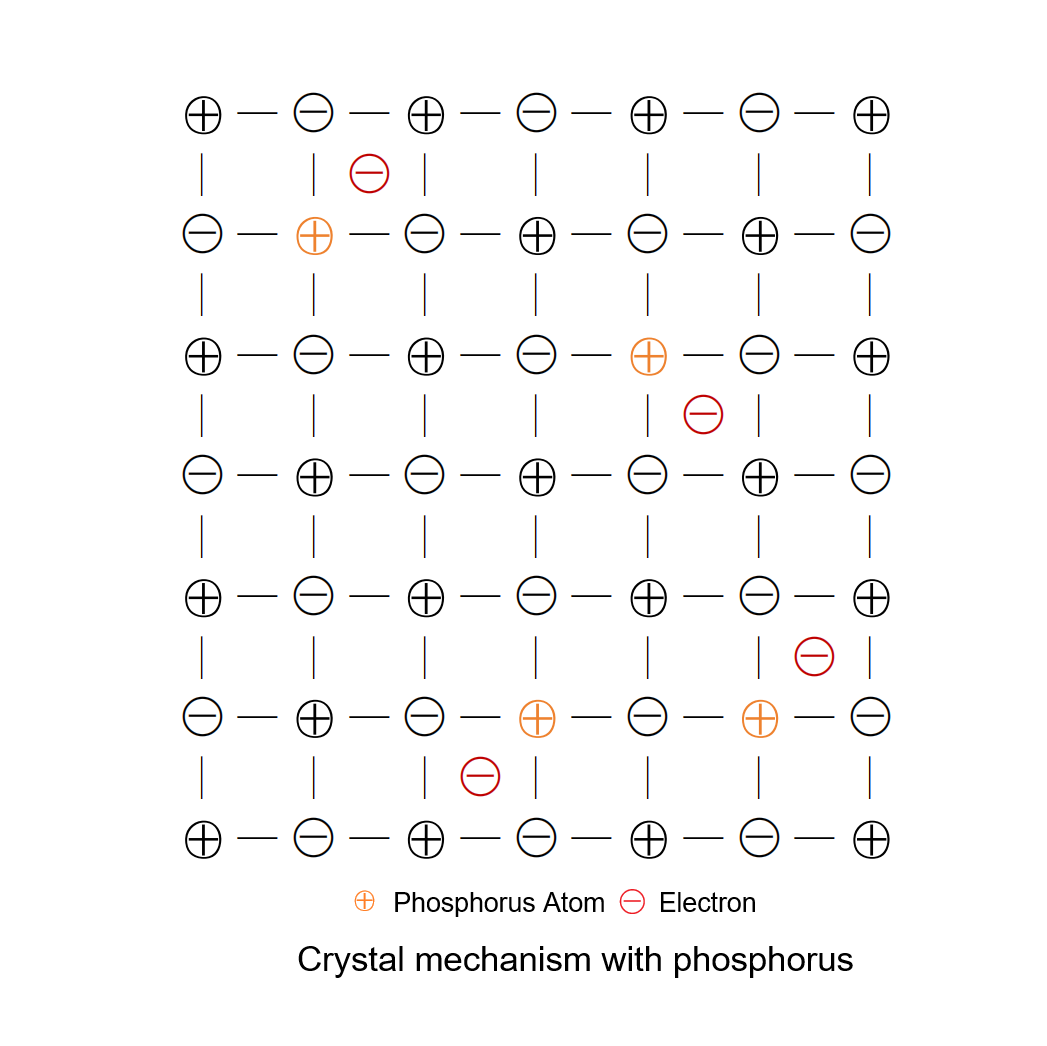
Since there are more holes in P-type semiconductors and more electrons in N-type semiconductors, when these two semiconductor materials are combined together, a special thin layer will be formed at their interface area.
In this thin layer area:
The P-type side has a negative charge because some holes are filled by electrons diffused from the N-type side.
The N-type side has a positive charge because after some electrons diffuse to the P-type side, fixed positive ions are left on the N-type side.
This charge distribution forms a PN junction, which is the core structure of a photovoltaic cell. A built-in electric field is generated inside the PN junction, which can prevent further diffusion of electrons and holes, and at the same time, when the external circuit is turned on, it guides the directional flow of electrons, thereby generating photocurrent.
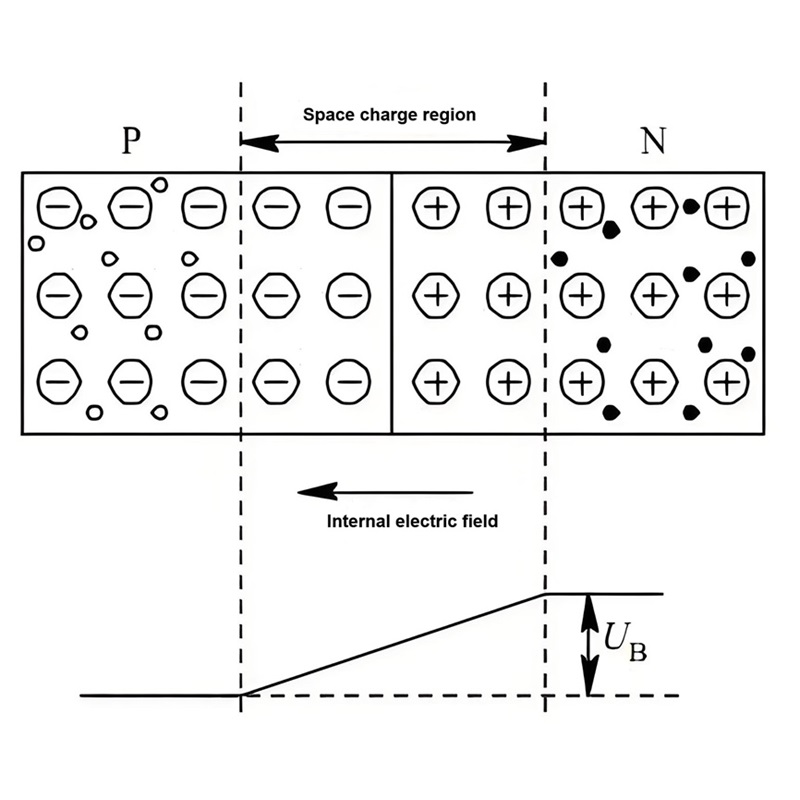
Due to the different concentrations of electrons and holes on both sides of the PN junction, electrons diffuse from the N region to the P region, while holes diffuse in the opposite direction. This movement of carriers forms a built-in electric field inside the semiconductor and generates an intrinsic potential difference at the PN junction, which promotes the further diffusion of electrons and holes.
Space charge region and equilibrium state
The built-in electric field in the PN junction leads to:
The formation of the **space charge region (depletion region)** - this region contains fixed positive and negative charge layers that prevent the disordered diffusion of electrons and holes.
The diffusion of electrons and holes gradually reaches a dynamic equilibrium, making the PN junction exhibit characteristics similar to silicon diodes in the absence of light.
Photovoltaic effect under light conditions
When photons irradiate a photovoltaic cell, it excites electron transitions, thereby breaking the original balance, generating photogenerated carriers, forming current in the external circuit, and realizing the conversion of light energy to electrical energy.
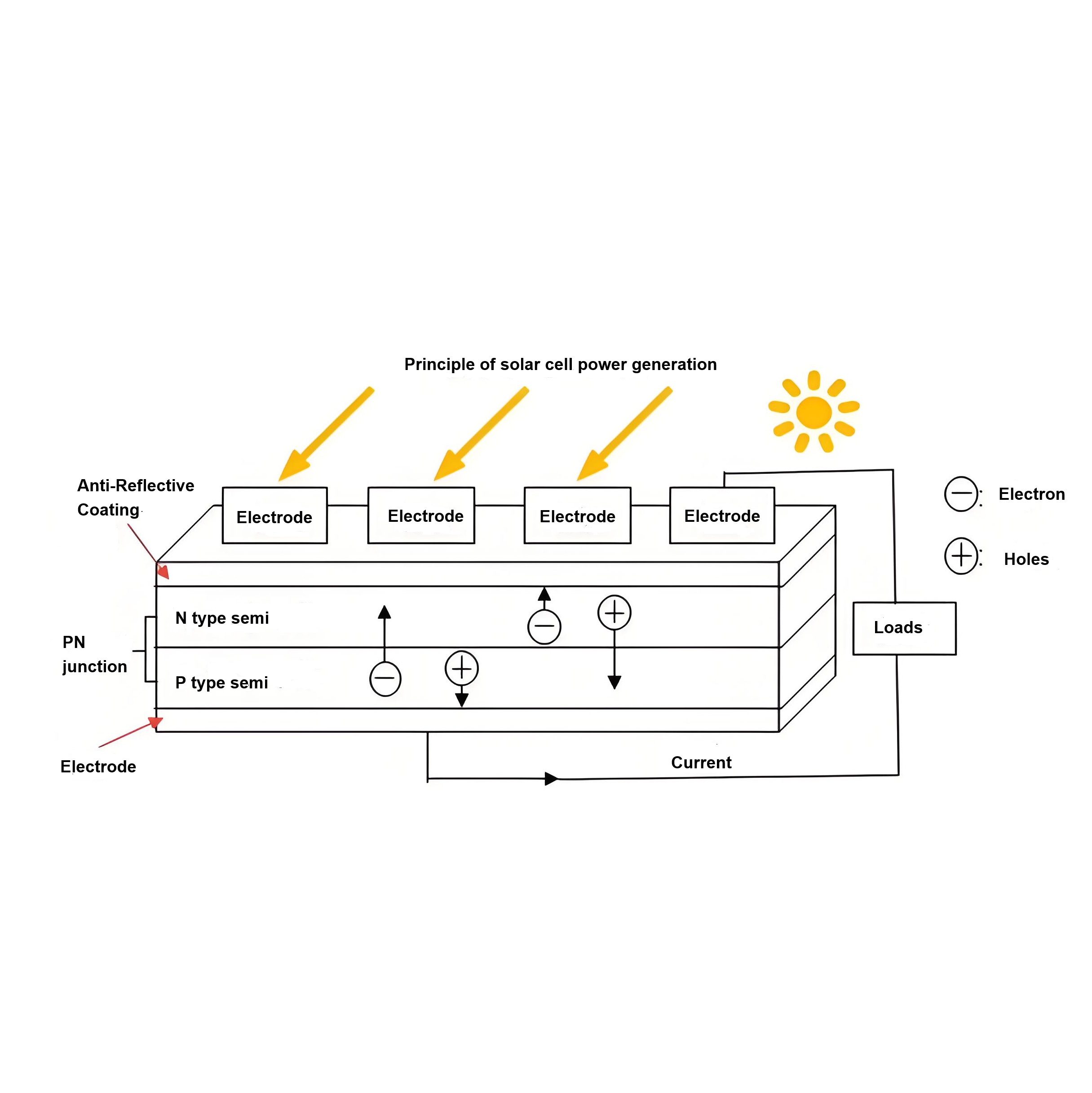
When sunlight hits a photovoltaic cell, photons will have the following three effects:
Part of the light is reflected and cannot participate in photoelectric conversion.
Part of the light is absorbed and used to stimulate electron transitions.
Part of the light passes through the cell and is not effectively used.
Formation and separation of photogenerated electron-hole pairs
The absorbed light energy causes the bound electrons in the silicon atoms to transition to a high energy state, forming electron-hole pairs. Under the action of the built-in electric field of the PN junction:
The holes in the N region move to the P region.
The electrons in the P region move to the N region.
Charge accumulation and current formation
This directional movement causes a large amount of negative charge (electrons) to accumulate on the illuminated side of the photovoltaic cell, while a large amount of positive charge (holes) to accumulate on the backlit side. If a load is connected to the positive and negative poles of the cell, electrons will flow in the external circuit to form a photogenerated current. Under continuous illumination, photovoltaic cells can continuously output electrical energy.
Voltage and assembly of solar cells
A single solar cell is a thin PN junction semiconductor with a rated output voltage of about 0.5~0.55V under standard lighting conditions.
In order to obtain higher voltage and greater power, multiple batteries are usually connected in series or in parallel to form photovoltaic modules (battery modules), which in turn form photovoltaic arrays for practical applications.
Power volatility of solar cells
The output power of photovoltaic cells is random and is affected by the following factors:
Time (day, night, seasonal changes).
Geographic location (latitude, altitude, climate).
Light intensity (sunny, cloudy, overcast).
Installation method (tilt, orientation, shading).
Therefore, in practical applications, it is necessary to cooperate with MPPT (maximum power point tracking) technology, energy storage system or grid-connected inverter to optimize the overall performance and stability of the photovoltaic system.